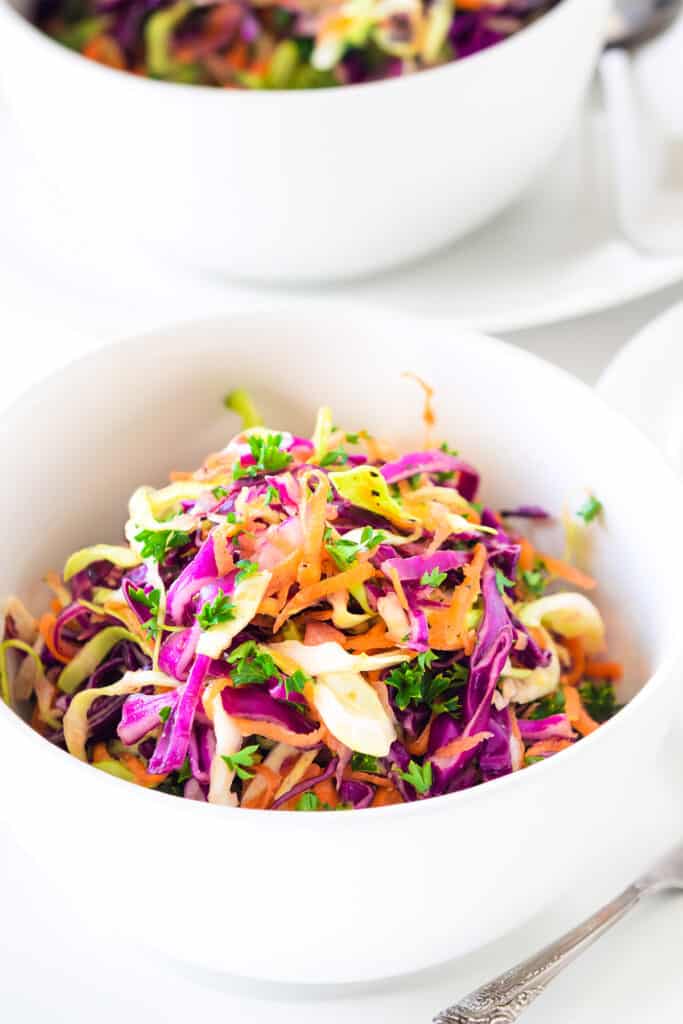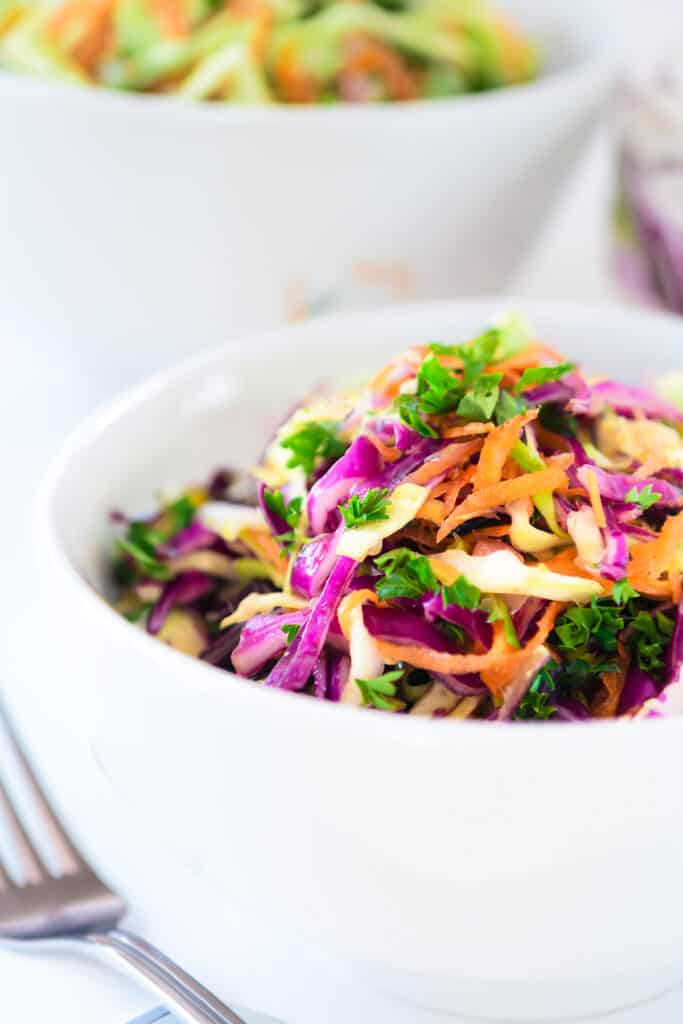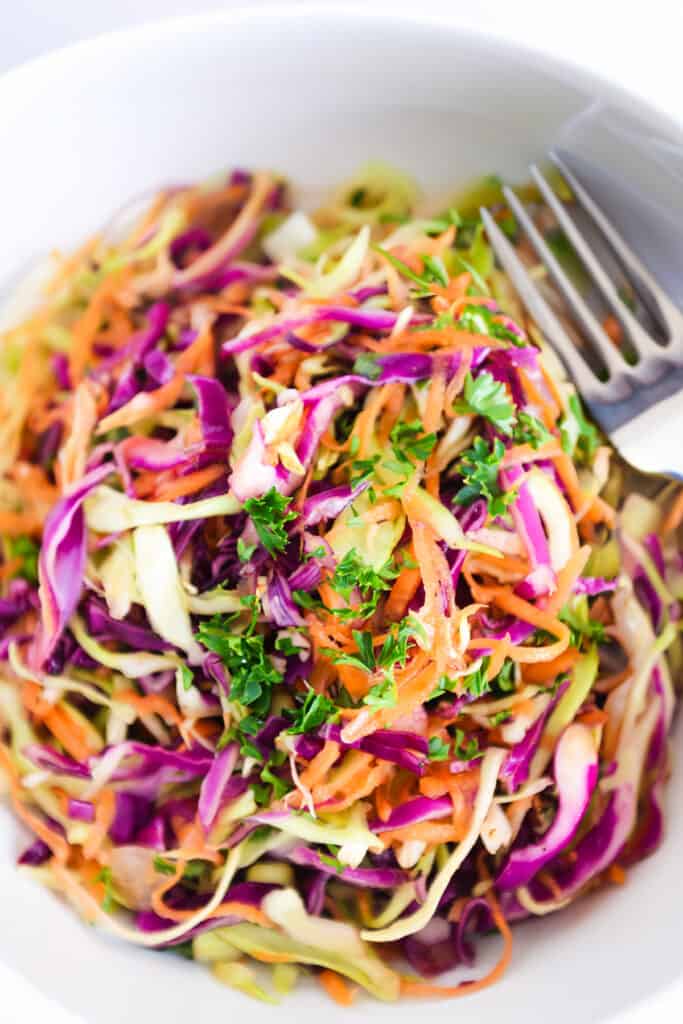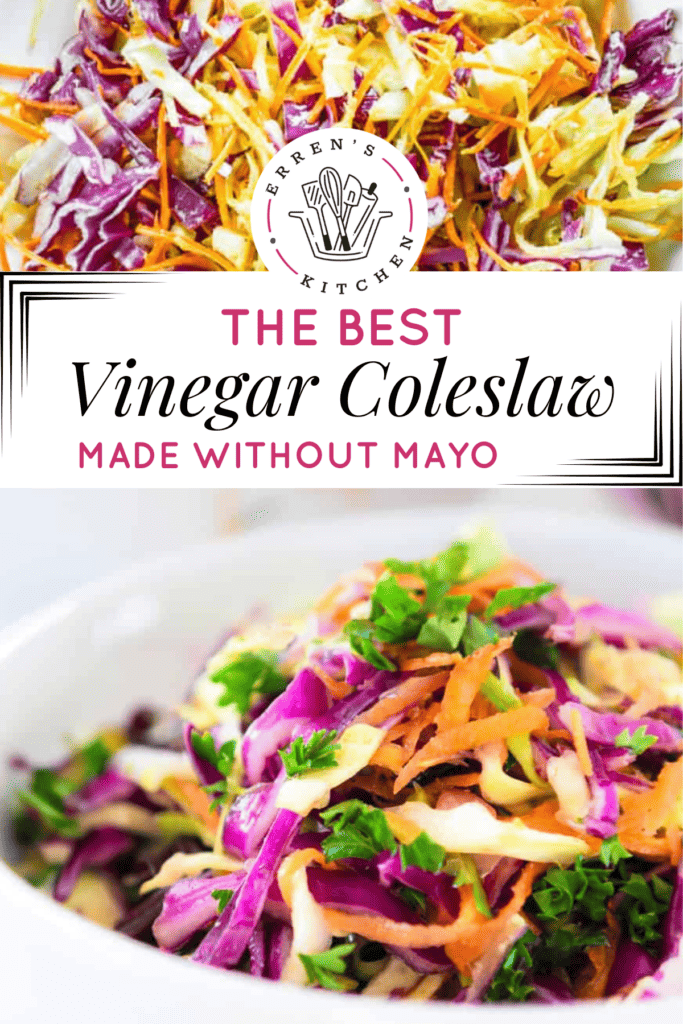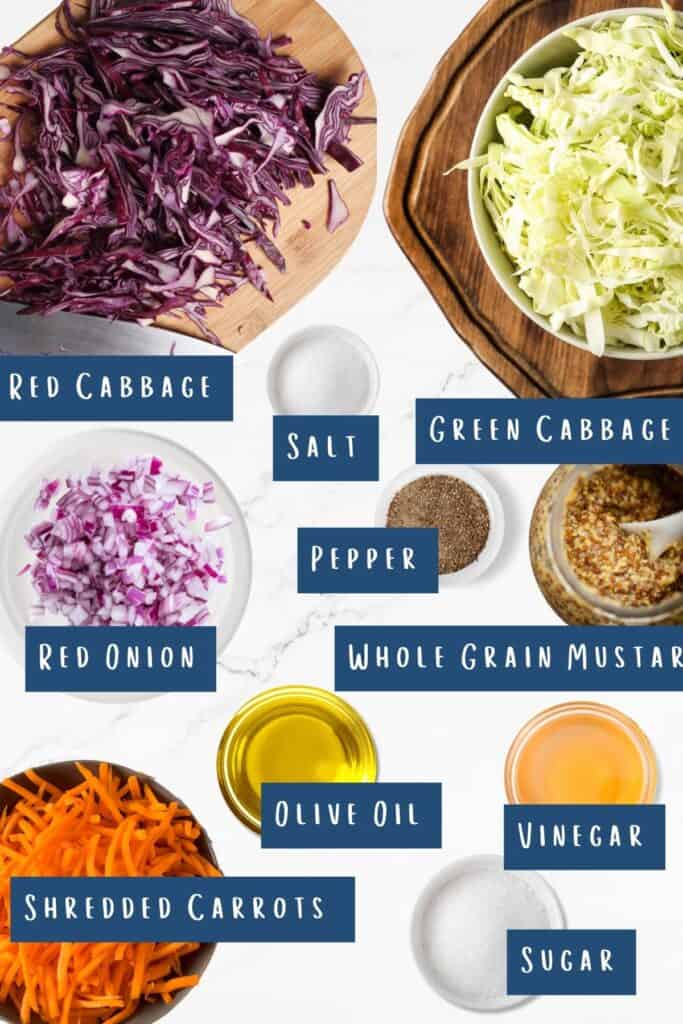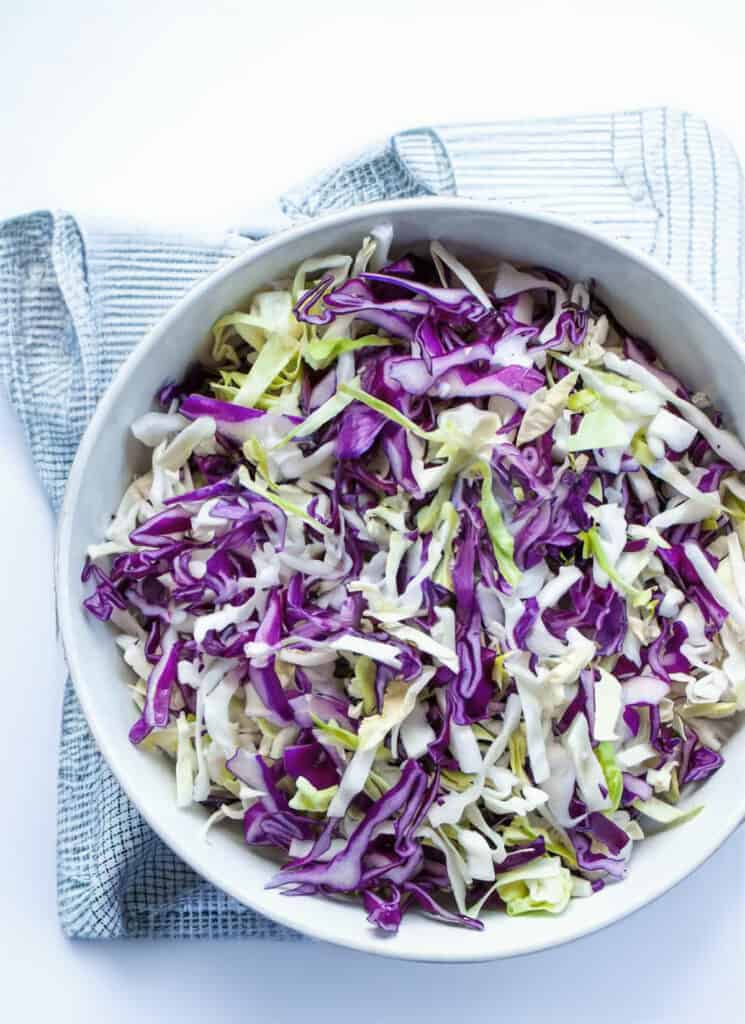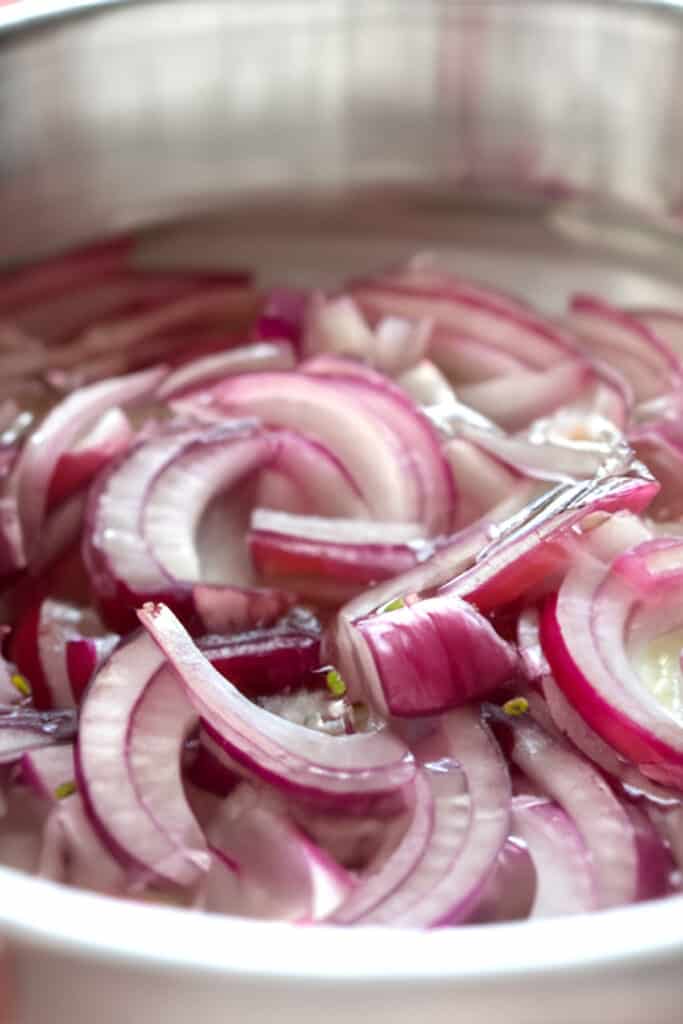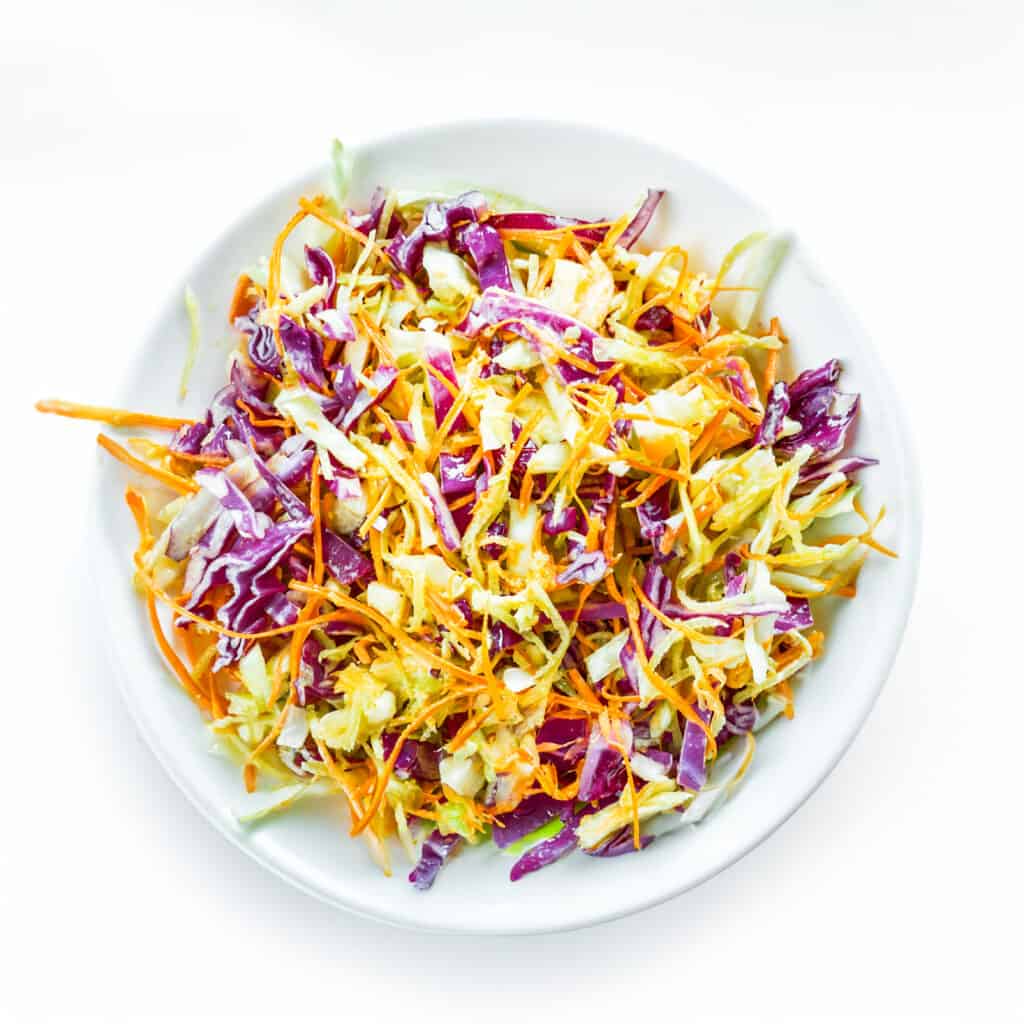Want a tangy and refreshing coleslaw that steals the spotlight at your next barbecue or picnic? Then get ready to wow your guests with this Vinegar Coleslaw recipe, a cool twist on the classic favorite. With vibrant colors, crispy cabbage, and a zingy vinegar dressing that’ll make your taste buds dance. Whether you pair it with juicy hamburgers or mouthwatering Grilled Ribs, this coleslaw guarantees a burst of flavor in every bite. Best part? It’s a breeze to whip up, so you can spend less time cooking and more time savoring fun-filled moments.
Preparing The Cabbage For Coleslaw
To keep the cabbage crisp when dressed, slice the cabbage into thin, uniform pieces. You can use a sharp knife or a food processor for this. After slicing, place the cabbage in a large bowl or colander. Sprinkle a teaspoon of salt over the cabbage slices and toss them gently to distribute the salt. Let the cabbage rest for 10 to 15 minutes to allow the salt to absorb excess moisture. During this time, you may notice some liquid accumulating. Vinegar: Opt for high-quality cider vinegar for the best flavor. If you don’t have cider vinegar, you can substitute white vinegar or white wine vinegar. Olive Oil: Choose a good-quality extra-virgin olive oil to enhance the overall taste of the coleslaw. Mustard: We use whole grain, but yellow or Dijon mustard will also work well in this recipe. Celery Salt: If you don’t have celery salt, you can substitute it with celery seed. Granulated Sugar: Adjust the sweetness to your liking by adding more or less sugar. You can also use brown sugar for a different flavor profile. Salt & Pepper: Use your preferred type of salt and freshly ground black pepper for seasoning. Green and Red Cabbage: It’s important to use fresh cabbage and shred it fine for the best texture. Avoid using pre-shredded coleslaw mix for this recipe, as fresh cabbage provides superior texture and flavor. Carrots: Use large carrots, peeled and grated, for added color and sweetness. After resting, rinse the cabbage under cold water to remove the salt. Make sure to drain it thoroughly to remove excess water. You can use a salad spinner to spin the cabbage in batches or press it gently with a rubber spatula in a colander. Once the cabbage is well-drained, it’s ready to be used in your coleslaw recipe.
Step By Step Instructions
Start by soaking the sliced red onion in cold water to reduce its sharpness. Let it sit for about 10 minutes while you prepare the other ingredients. In a large mixing bowl, whisk together ¼ cup of cider vinegar, olive oil, yellow mustard, celery salt, and 3 tablespoons of granulated sugar until well combined. Season with salt and pepper to taste. Drain the soaked red onion and add it to the dressing mixture, stirring to coat. Add the ½ lb shredded green cabbage, ½ lb red cabbage, and 2 large grated carrots to the bowl. Toss everything together until the vegetables are evenly coated with the dressing. Taste the coleslaw and adjust the sweetness or acidity to your liking. If desired, add up to 2 teaspoons of sugar or vinegar, one teaspoon at a time, and mix well. Serve the Vinegar Coleslaw chilled as a refreshing and tangy side dish alongside your favorite main courses. Erren’s Kitchen is written and produced for informational intentions only. We are not certified nutritionists, and the nutritional information found on this site has not been assessed or authorized by a nutritionist or the FDA. The nutritional information found in our recipes is offered as an estimate and should not be considered a guarantee or fact. The estimated data is provided as a courtesy and calculated through a third-party online nutritional calculator, spoonacular API. Although we do our best to provide accurate nutritional information, these figures should be considered rough estimates. Many factors, such as brands or products purchased and the nutritional fluctuations that naturally occur in fresh produce, can alter the effectiveness of the nutritional information in any recipe. Furthermore, various online calculators provide different results depending on their particular algorithms and nutrition fact sources. To obtain the most precise nutritional information in a provided recipe, you should calculate the nutritional information with the exact ingredients you are using when preparing the recipe using your preferred nutrition calculator.
